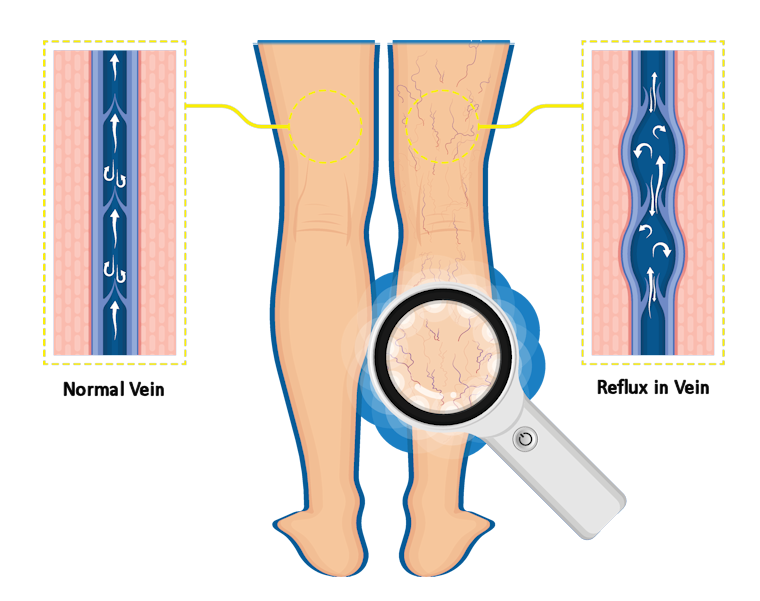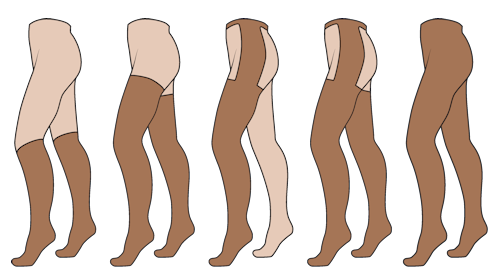Varicose veins are abnormally swollen and twisting veins. Most commonly they affect the veins close to your skin, referred to as superficial veins. They can also result from the deeper veins in your legs, which are not visible, not working properly.
Veins carry the blood back up to the heart from your legs. Within the veins there are one-way valves that allow the blood to flow to the heart and not back down to your feet. When they do not work well the blood can build up in your legs.

The common symptoms of varicose veins are:
- swelling & tension
- aching & heaviness
- bleeding & blood clots
- restless legs & cramps
- itching & dry skin
- darkening & thickening of the skin
- slow to heal wounds in the legs
- ulcers
What causes varicose veins?
Varicose veins are a common condition affecting about 20% of older adults. As you age the chance of developing varicose veins increases. It is also genetically inherited. If your parents have varicose veins you are more likely to develop them as well. Women are more likely to develop varicose veins especially after childbirth. Being overweight places extra pressure on your veins and causes varicose veins. You can also develop varicose veins from trauma or injury to your legs and veins. While standing alone is unlikely to cause varicose veins, it can make your symptoms worse if you stand for long periods.
Should I get them treated?
Varicose veins are not an urgent or dangerous condition. Many people have them and do not have any symptoms and do not need treatment. If do have any of symptoms listed above, then it is best to seek medical advice. The symptoms, if caused by abnormal veins, are unlikely to improve with time. If you have skin changes like discolouration, thickening, bleeding, or ulcers then it is advisable to have them treated earlier.
What is the process to get treatment?
We recommend that you visit your General Practitioner in the first. You can also make appointment directly with us. However, some insurance policies require you to obtain a referral from your GP. Please check with your insurance provider first.
You will have an initial consultation with the specialist, Dr Giri Mahadevan, where your history will be taken, and physical examination performed. You will be referred to have an Ultrasound scan of your legs. This scan is a separate appointment performed by radiology.

Once you have had the scan, you will need to make either a physical or phone consultation with the specialist. He will go through the scan and your specific symptoms and recommend the best course of treatment for you. The most common treatment is laser or radio frequency. You will have opportunity to go through the procedures and the risks and benefits.
What if I do not want treatment now?
As stated above, there is no urgency to treat varicose veins. There is little that can be done to repair your existing varicose veins. However, you can take steps to minimise its impact on you. Maintain a healthy weight, this will help reduce the pressure on your veins. If you smoke, you need to stop, as this causes blood clots in veins. Wear compression stockings and elevate your legs when sitting, as this will encourage the return of blood back to your heart.

